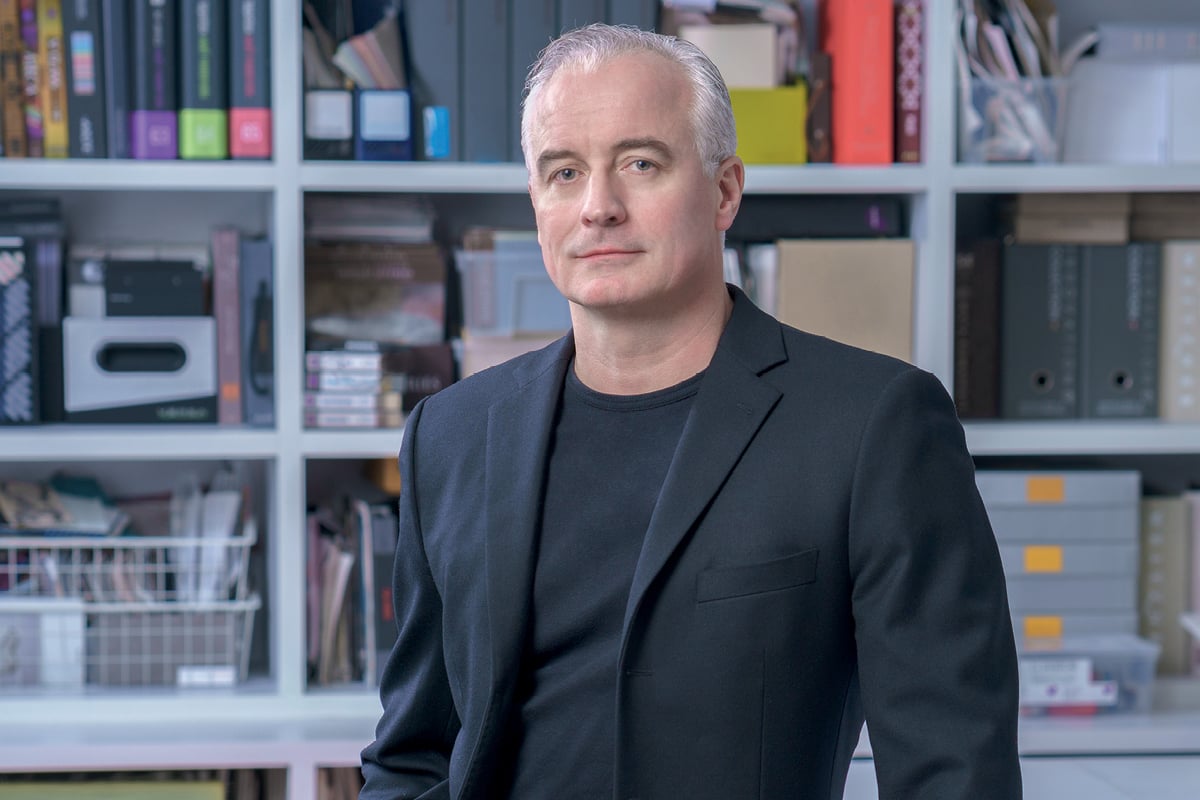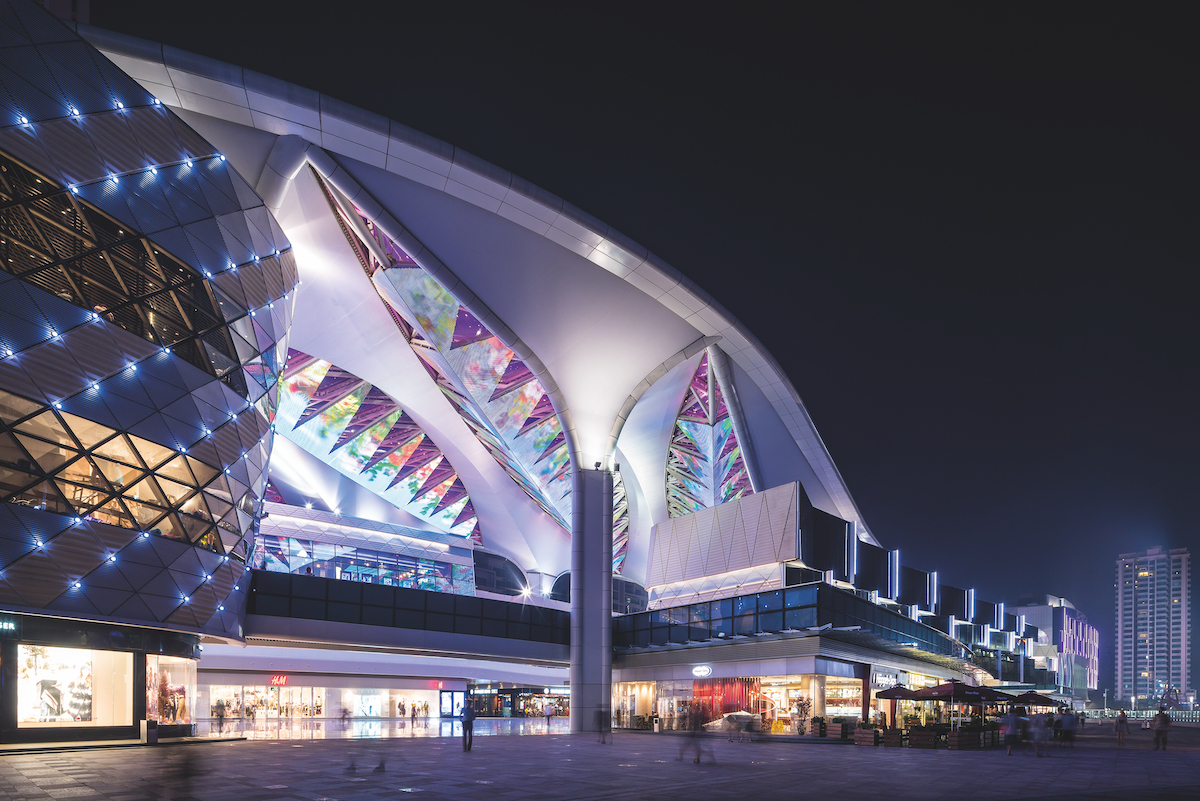Culture by design: Paul Collins
HOK Asia Pacific’s Managing Director Paul Collins says collaboration is key to creating industry-leading innovation.
HOK Asia Pacific’s Managing Director Paul Collins is a double threat in the architecture realm. Registered in both the UK and Hong Kong, he brings the best of ‘East meets West’ to HOK Asia Pacific. "When our clients engage with us and see I am a registered architect in Europe and Asia, it gives them confidence that I’m connected; that I understand the way things work," Paul says.

Originally from London, Paul studied architecture in the UK. Before going on to get his master’s, he took time off and went to Hong Kong to work for an architecture firm. "It was really a ‘spirit of adventure’ move," he remembers. "At that time, you didn’t need a visa, so you could just arrive in Hong Kong and work. It was very easy. And I loved it there."
To finish his master’s, Paul returned home to the UK, but his heart remained in south-east China. So, in the early 1990s, he returned, earning his second architecture certification. The rest is history. "Hong Kong is a fantastic place to be an architect," he shares.
"There is so much going on, and the scale of things is very exciting for a designer. Here, you can take on very large-scale projects that would be comparatively few and far between in the UK and even London."
Paul’s journey in Hong Kong led him to work with a couple of architecture firms before finally landing the opportunity of a lifetime – to work with HOK. "The firm I was working for at the time collaborated with HOK on a project," he recalls. "It was ultimately unsuccessful. But, after I had my first interaction with them, I thought, ‘Wow, this is an incredible company doing amazing work with great people.’ And, I kept them in my mind."
In 2003, Paul signed on as HOK’s Senior Designer. As the years passed, though, he felt increasingly drawn to the leadership side of the business. Following this new passion, Paul was promoted to Managing Director in early 2016 – a move he credits to his mentor Riccardo Mascia, an executive committee member for HOK Global.
"He taught me a huge amount about running a practice effectively," Paul recalls. "He showed me it’s really all about integrity. Always be honest about your failures as much as your successes and learn from them. It seems obvious, but it can be difficult to do sometimes when talking to your seniors."
Perhaps the most useful bit of wisdom Riccardo instilled in him was to always be completely open. "Sharing information really benefits in the long run," Paul explains. "There’s never a need to hide, conceal or fudge information where you think it might benefit in the short-term. You have to keep the greater good in view all the time."
This open and honest culture is rooted into HOK’s very DNA, which was incredibly refreshing for Paul. "In my experience with other large firms, there can be a creakiness, backstabbing or groups of people whispering about something else," he shares.
"So, coming to work for HOK was like a breath of fresh air. Here, people in leadership positions will stamp out that kind of thing very quickly because it’s counter to our culture. Everyone at HOK runs in the same direction. It’s been incredibly valuable having that open and honest communication."

It’s a standard that trickles down into everything the firm does, and it gives HOK an edge over its competitors. "The culture is fundamental to any business," he says. "It’s not just about how the world sees you from the outside, but about how your people experience it day to day. Great design drives our culture. How we achieve that, though, is really through collaboration."
The firm’s collaborative nature has elevated it far above the competition, allowing it to create close relationships with clients and partners while delivering world-class service. Collaboration is basically HOK’s superpower.
"It’s applied throughout our entire business," Paul says. "We get the best people to come in, which helps us to establish best practice. It helps us create industry-leading innovation that is shared around the entire firm.
"When you engage the HOK office in Hong Kong, you’re actually engaging the entire global firm," Paul continues. "We have no hesitation grabbing a particular thought leader from another office, whether it’s New York, London, Washington, DC or wherever and bringing them into the project in order to give our clients the very best thinking for what they want to achieve with their development."
"When you engage the HOK office in Hong Kong, you’re actually engaging the entire global firm."
While commercial project design is the backbone of HOK Asia Pacific’s services, the firm’s portfolio is overflowing with highly regarded projects spanning health care, aviation, science and technology. Fusing excellence with whimsy and smart with sustainability, HOK’s design ethos is rooted in technical excellence.
"The driver is design and imagination," Paul explains. "It’s combining that with an incredibly high level of technical excellence to deliver outcomes that are not only functional but also really inspirational. That’s what we’re shooting for every time."
Currently, the firm is working on two groundbreaking public hospitals in Hong Kong. And, don’t tell anyone, but Paul says they’re his favourite. "They’re a huge leap forward in design quality from what’s existing in Hong Kong," he says.
HOK is owned purely by the people who work there.
There are no outside investors. And, it isn’t listed on the stock exchange. This gives the architecture firm freedom to be selective when choosing clients.
"They’re really cool-looking buildings, and people here will appreciate them for many years to come. It’s very satisfying to bring the world-leading design skills of HOK to what is effectively my home town. It feels good."
As the firm works to increase its presence in other Asian markets and focuses on opportunity-rich, innovative high-spec buildings of the future, nurturing key partnerships remains critical. "We have to face a lot of different cultures," Paul explains.
"So, an important part of our business is establishing strong relationships with partners in strategic locations. We really couldn’t survive without these relationships."
In challenging economic times, these highly collaborative relationships – like the one the firm has with WSP Asia – become more important than ever. "We try to cultivate these relationships with local partners, spending time with them and going the extra mile to do projects with beneficial conclusions, building trust and establishing strong working relationships because that’s how you find opportunity," he says.
"In the end, we can’t be everywhere. While we have clients that come to us directly, we also rely on opportunities that are flagged up by our local partners around the region."
Proudly supported by: